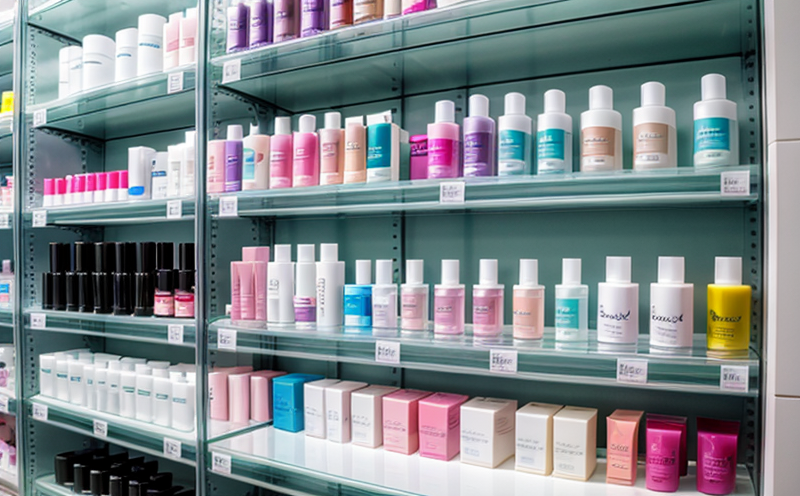Oxidizer Stability Testing in Hair Colorants
The stability of oxidizers in hair colorants is a critical aspect of ensuring product safety and efficacy. Oxidizing agents, such as hydrogen peroxide or peroxylaurate esters, play a pivotal role in the chemical reactions that lighten hair to desired shades during processing. Ensuring their stability over time is crucial for maintaining both the performance of the product and user safety.
During the formulation process, it's essential to assess how these oxidizers behave under various conditions such as temperature, humidity, and storage duration. This helps in identifying potential degradation products that could affect the end-user experience or pose health risks. The primary goal is to ensure that the hair color remains effective throughout its shelf life while complying with international safety standards.
The testing methods used for assessing oxidizer stability are designed to mimic real-world conditions as closely as possible. These tests typically involve exposing samples of the final product to controlled environments and measuring changes in key parameters like pH, peroxide content, and overall color intensity over time. By conducting these analyses early in development, manufacturers can make necessary adjustments to their formulations to enhance long-term performance.
Understanding the behavior of oxidizers is particularly important given the increasing trend towards safer alternatives within the cosmetic industry. Regulatory bodies like the European Union's Cosmetics Regulation (EC) No 1223/2009 and the FDA's Final Rule on Color Additives have stringent requirements regarding ingredient safety and efficacy, especially for products intended to come into prolonged contact with skin or mucous membranes.
To meet these standards, laboratories specializing in cosmetics testing employ advanced analytical techniques such as high-performance liquid chromatography (HPLC), gas chromatography-mass spectrometry (GC-MS), and titrimetric analysis to quantify the presence of active ingredients and detect any breakdown products. Additionally, rheological measurements may be conducted to evaluate changes in viscosity or consistency that could impact application.
| Parameter | Description |
|---|---|
| Peroxide Content | Quantification of residual peroxide levels to ensure safe usage. |
| pH Level | Assessment of pH stability which influences skin tolerance and product longevity. |
| Viscosity Changes | Evaluation of consistency shifts over time to assess potential user experience issues. |
| Color Intensity Retention | Determination of how well the final shade persists under various conditions. |
Quality and Reliability Assurance
The accuracy and reliability of stability testing are paramount in ensuring high-quality cosmetic products. Consistent results across multiple batches and over extended periods help build consumer trust and regulatory compliance. To achieve this, laboratories adhere strictly to internationally recognized standards such as ISO 15890:2016 for colorants.
Quality assurance measures include rigorous calibration of equipment used in testing, regular validation of methods, and adherence to Good Laboratory Practices (GLP). These practices ensure that all data collected is accurate, reproducible, and representative of actual product behavior. By maintaining these standards, laboratories can provide clients with confidence that their products meet the highest safety and efficacy requirements.
- Calibration checks every six months
- Method validation prior to each batch test
- Ongoing training for staff on current methodologies and best practices
Environmental and Sustainability Contributions
The cosmetics industry is increasingly focusing on sustainability, aiming to minimize environmental impact while still delivering effective products. Conducting thorough stability tests helps in optimizing ingredient selection and formulation processes, thereby reducing waste associated with failed batches.
- Promotes efficient use of raw materials by identifying stable formulations early
- Reduces energy consumption through optimized storage conditions
- Minimizes chemical disposal costs by preventing hazardous waste generation
- Enhances product quality, which can lead to reduced returns and complaints
Use Cases and Application Examples
Oxidizer stability testing is widely utilized in the development of hair colorants. Here are some specific scenarios where this service proves invaluable:
- New Formulation Development: Ensures new products meet safety and efficacy requirements.
- Ingredient Optimization: Identifies optimal concentrations and combinations for best results.
- Batch-to-Batch Consistency: Guarantees that each batch performs consistently with others.
- Storage Stability: Verifies shelf life under various environmental conditions.





